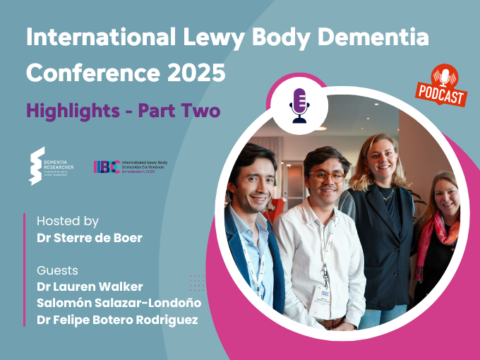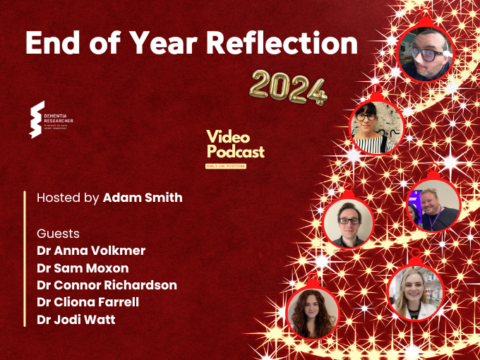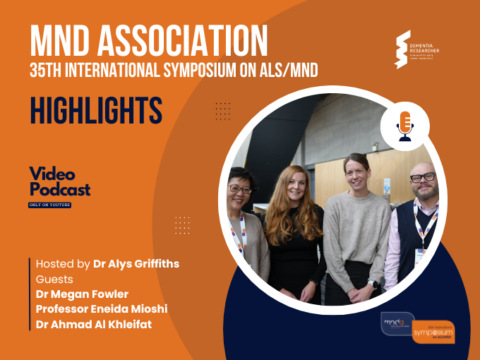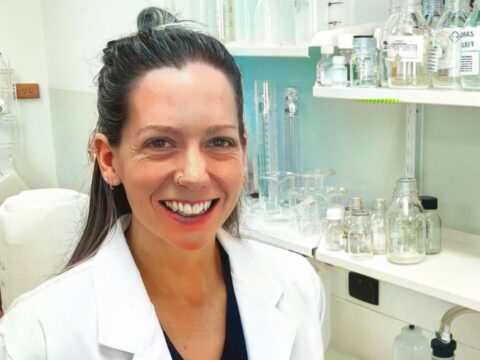The 34th International Symposium on ALS / MND organised by the MND Association took place in Basel, Switzerland from the 6-8 December 2023.
In this podcast Dr Alys Griffiths from The University of Sheffield hosts a discussion with three researchers to talk about their talks, and highlights from the biggest annual conference dedicated to ALS and MND research. Sharing news from researchers working around the world to better understand amyotrophic lateral sclerosis and motor neurone disease.
Sharing their highlights are:
Alicia Northall, Postdoctoral Researcher from University of Oxford. Alicia recently moved back to the UK after completing her PhD in Neuroscience at the University of Tubingen / Otto-von-Guericke University Magdeburg in Germany. Alicia’s works in Neuroimaging to characterise microstructural changes to the brain in living patients using 7-Tesla MRI.
Dr Philip McGoldrick, Research Associate at University of Toronto. Phil completed his PhD at University College London and is interested in the basic mechanisms that contribute to disease progression and investigate them using a mixture of cell and animal models, alongside post mortem patient tissue.
Amber Sewell-Green is a PhD Candidate and Accredited Practicing Dietitian (APD) at University of Queensland, Australia. Amber’s research is focused on improving Nutrition Care Guidelines for MND looking at energy balance and the role of lipids in ALS.
Heather Marriott is a PhD Student at King’s College London. Amber undertakes analysis of next-generation sequencing data using bioinformatics and machine learning to advance personalised medicine approaches in ALS/MND.
Links mentioned in the show:
Event website: https://symposium.mndassociation.org/
News from the event as it happened on X: https://bit.ly/alsmndsymp
Voice Over:
The Dementia Researcher podcast, talking careers, research, conference highlights, and so much more.
Dr Alys Griffiths:
Hello and welcome to the Dementia Researcher podcast. Today we’re in Basel in Switzerland to bring you the highlights from the 34th International Symposium on ALS and MND.
I am Alice Griffiths and I’m an NIHR senior research fellow at the University of Sheffield, and I’m delighted to be guest-hosting this show. Let me start with today’s fun fact. Basel is a cultural and pharmaceutical hub at the crossroads of Switzerland, France, and Germany, boasting the world’s oldest art collection, and being the home to the headquarters of pharma giants. All great reasons why it makes a wonderful home for this year’s symposium. As ever, in these conference highlight shows, I’m joined by researchers who are going to share their event highlights to provide a snapshot of what’s been talked about this week. Let’s meet the guests.
With me today is Alicia Northall, Heather Marriott, Amber Sewell-Green, and Philip McGoldrick. Let’s start with some quick introductions. Alicia, could you tell us about yourself please?
Alicia Northall:
Hi, I’m Alicia. I’m from the University of Oxford. I joined as a postdoc about six months ago, and I work on neuroimaging in ALS, trying to find new biomarkers.
Dr Alys Griffiths:
Heather, could you go next?
Heather Marriott:
Yep. I’m a third year PhD student at King’s College London, and I study… I use multiomics in ALS and MND to try and identify subgroups of patients which might be beneficial for clinical trial recruitment.
Dr Alys Griffiths:
Amber, you’ve come the furthest. Could you introduce yourself please?
Amber Sewell-Green:
Hi, I’m Amber. I’m from the University of Queensland all the way from Australia. I’m a first year PhD student and also a dietitian with a background in neuroscience. And I’m looking to improve nutrition care guidelines with a focus on energy and fats in motor neuron disease.
Dr Alys Griffiths:
And Philip?
Dr Philip McGoldrick:
Hi, I’m Philip McGoldrick. I’m a research associate at the University of Toronto, funded by ALS Canada and Brain Canada, and I work on nucleocytoplasmic transport in ALS.
Dr Alys Griffiths:
Thank you. So, I know this is the first time for all of you joining on the podcast, so thank you for joining us. Let’s get to some highlights.
I’m sure listeners already know the format, but what we do is go around the room a couple of times and each person shares one of their favourite talks and posters, and then we’ll just have a chat about them. But before we get going, I wanted to give you all the chance to talk about any talks you’ve given this week. Has anyone been presenting?
Dr Philip McGoldrick:
Only a poster.
Amber Sewell-Green:
I can discuss my colleague that did present because I know enough about her work, so I’m happy to share that. My colleague, Jeren Chang, she’s been doing really amazing work with MRI images of the brain. She started on hypothalamic volume, a little part of the brain that we know is involved with metabolism and appetite, and then they actually showed pictures of non-food items and low-calorie and high-calorie food items in controls and ALS patients in a fed and fasted state.
I guess the first part of her research showed that there’s a bit of background showing the hypothalamus may shrink in people with motor neuron disease, but they found a curve. So, the lowest and the highest BMIs, there was a difference, but the middle BMI not so much, so it’s not quite so straightforward as we think. But I think the main things that she found was, in the fed and fasted state, the high-calorie foods had a lot more lighting up, particularly in the right temporal pole and in the cerebellum for controls, but it didn’t seem to be so for MND patients. So, it seems to be maybe reduced activation or a bit of a dulling in this. And there is some literature kind of showing that these regions of the brain are associated with food and reward and maybe social benefits. So just starts to highlight I guess areas of the brain we don’t think about with appetite that might be affected in people with MND.
I think her research is going to be really exciting and I’m very proud of her. She did a wonderful job.
Dr Alys Griffiths:
Great. I guess, what would that mean for people we’re seeing in clinic?
Amber Sewell-Green:
I guess it would mean targeted approaches that, if people look at appetite differently, maybe they may not be driven by memories. Obviously, I can’t make exact to say causation, so let me put a little bit of a marker there. But I see it as, we might know how to approach and have a more individualised approach. Especially me being a clinician, if we know there’s areas of the brain that may behave a bit differently compared to healthy populations, we may address how we approach encouraging people with weight loss because what would work with other people may not work in MND populations.
Or just explain how they feel about food if that’s changed. In other cases, we know that there’s some taste changes, food tastes better or worse, or there’s decreased appetite, and we may be able to provide a bit of an explanation why, which I think is always nice.
Dr Alys Griffiths:
Thank you. Philip, you said you did a poster.
Dr Philip McGoldrick:
Yeah, yeah, I had a poster on the first day. So, my work is on C9orf72, which is the most common cause of ALS and FTD. I work on the loss of function of the protein because it’s a fairly understudied area. So, what I’m interested in is the mechanisms that loss of function, the effects that it has on cellular mechanisms. So, I’ve been looking at nucleocytoplasmic transport because we know the gain of function toxicities affect nucleocytoplasmic transport. I want to see if they could also be affected by loss of function. So, we have some overlaps with some of the work that was presented here and we’re quite excited about.
Dr Alys Griffiths:
Did you get any good conversations at your poster?
Dr Philip McGoldrick:
I was talking for about two hours, only to about four people. So, the people who liked it liked it.
Dr Alys Griffiths:
Great. Alicia?
Alicia Northall:
I didn’t have a poster or a talk, so I joined my group around the time of the submission deadline. It’s actually nice to be a fly on the wall for the first time at conference and just be able to soak it all in and ask sorts of questions.
Heather Marriott:
Yeah, so I presented a poster on the genetic analysis of NEFH, neurofilament heavy changing in sporadic ALS. And the reason that we did this is because NEFH is included a lot of genetic screening panels, but the actual genetic mutations and variants that we find in NEFH haven’t been robustly associated with ALS risk. So, we wanted to try and characterise that further and actually see if variants do modify ALS risk by performing a large-scale screening analysis of the project mine, ALS, Seekers, and Cohort.
Dr Alys Griffiths:
And did you have any good conversations?
Heather Marriott:
Yeah, there was a couple of people that were interested, although they were wet lab people. Now I’m a purely bioinformatician. I couldn’t really answer their questions that well, but…
Dr Alys Griffiths:
That’s the sphere, isn’t it?
Heather Marriott:
Yeah.
Dr Alys Griffiths:
So, they’re doing similar work from a different angle?
Heather Marriott:
Yeah. We confirmed previous reports in the literature which say that variants in a specific domain of NEFH, the tail domain, which affects phosphorylation of the protein that is found in the serum in CSF, they actually said that perhaps the mutations are driving the phosphorylation. So, they’re really interested in tackling it from a different approach, like introducing mutations into in vitro models. So, it’s quite nice to sort of gain a perspective from the other side.
Dr Alys Griffiths:
Great. So, shall we move on to everybody’s highlights? Philip, do you want to go first?
Dr Philip McGoldrick:
Yeah. My first highlight was a talk by Gary Armstrong from McGill University in Montreal in Canada. Gary’s made; he’s used CRISPR to modify endogenous zebrafish [inaudible 00:07:56]. So, this is a much more physiological model of disease, and it aids the fish and performs lots of behavioural and imaging assays. I think it’s really important because then this is a physiological model in a small animal model, which is much more tractable for other experiments and things. It could be very, very powerful.
Dr Alys Griffiths:
And what was it you enjoyed about his presentation?
Dr Philip McGoldrick:
Everything. I think it was really good characterization-
Dr Alys Griffiths:
[inaudible 00:08:21].Dr Philip McGoldrick:
Really good characterization and really good. It would have a lot of power and a lot of translatability for different studies.
Dr Alys Griffiths:
Great. Amber, do you want to tell us about your first highlight?
Amber Sewell-Green:
Yeah, I’m going to start a little bit broad, and I guess something I was surprised and really enjoyed is the focus on quality of life and the actual lived experience of the disease. I think there was a really huge representation of studies on psychology, studies on quality of life, studies on nutrition, studies on allied health, that span through the posters and through the talks.
In particular, there were a few on ACT therapy that were really interesting. There was also one by Anita Miyoshi and she talked about just how to manage behavioural changes. I guess we see maybe 15% of people with ALS will have that FTD spectrum, but then still more around 35% will actually still present with those behavioural changes of things like apathy. And if we can understand that as clinicians and then actually relay that to the carers that know your partner or your child or whoever it may be is not depressed, they’re just struggling with motivation, that can actually really change the course of how they behave and how they interact. So, I think that really presented some really powerful guides for carers and clinicians and for clinicians to share with carers.
Dr Alys Griffiths:
Is that the mind toolkit?
Amber Sewell-Green:
Mind toolkit, yeah. So, I’m really excited. I think in what I’ve looked at and seen as a clinician is, there really is that lack of standardisation. So, at seeing those toolkits come out and actually being looking forward to a future where there are online tools for clinicians and carers is something I think is really exciting.
Dr Alys Griffiths:
So, you’ve been kind of looking at things from a, how will this be helpful as a clinician and a researcher?
Amber Sewell-Green:
Yeah. I am a clinician myself, but we also run research clinics, so we see a lot of the human side of it four days a week. So really, you get that hands-on patient and carer experience. So, I’m always kind of keeping that in the back of my mind as how to better standardise it, how to improve quality of care.
Dr Alys Griffiths:
Great. Thank you. Alicia?
Alicia Northall:
So, I think most of my highlights are probably from the neuroimaging sessions, but I think I’d like to start with something that was not exactly in my area. The talk by Hallie Cropper, hope I said the name right, from the University of Illinois, which was focusing on the, well, a couple of things, but how injury can perhaps predispose certain people to develop MND. And of course, not everyone who has injuries develops MND, but she had a population of patients who had been involved in exercise mostly high-level exercise, I think, hopefully didn’t get that wrong.
She looked at where they’d had injuries in the past and changes in the spinal cord, the vertebrae, and where the onset site of their disease was. So, if they had had problem in the specific part of the left leg and had the ALS onset site was in the same place, which is something I’ve always been interested in. So, it was really nice to look at the natural history of those patients. And she also had some great post-mortem data and looking at where the disease may spread up from the spinal cord up to the medulla. That was my highlight.
Dr Alys Griffiths:
That sounds really interesting. So, is she looking at specific types of sport?
Alicia Northall:
I’m not sure exactly, but she had a sample of I think 18 patients and eight with post-mortem. I’m not sure if there are exclusively patients who had a history of high-level exercise, or it just happened to be the case that a lot of them were involved in sports. But I think it’s one of those things that’s so complicated when we think of lifestyle factors like diet and exercise, but they’re understudied and I think that a lot of patients and their caregivers are just interested in risk of exercise, things like that.
Dr Alys Griffiths:
And I think especially with there being kind of some high-profile people in the media who’ve got sports backgrounds, that kind of draws attention to that kind of work, doesn’t it?
Alicia Northall:
Yeah, definitely. Yeah, there’s lots of people who are doing those challenges while they’ve still got motor function left. Really inspiring, I think, to the whole community.
Dr Alys Griffiths:
Heather.
Heather Marriott:
So, one of my favourite highlights was from the genetics and genomics session in day one. I think one of my favourite talks was that, was by Yan Wang at UMC Utrecht. She developed a computational tool called SplicePath, which can identify intronic splice site hotspots in the whole genome. She applied it to paired RNA and DNA sequencing data of people with ALS, and she actually found that… She actually found mutations, splice site mutations in KIF5A, which have been previously reported, but she also found some promising mutations in other genes as well.
I think she might extend it genome-wide and then hopefully she might identify some new genes, which you can’t really get in the genome because this is in the non-coding genome. It’s not in the coding genome that we usually get with whole exome sequencing.
Dr Alys Griffiths:
So, for those of us not in genetics, where does that go next?
Heather Marriott:
Okay. So, in terms of if her gene has been identified, then what happens?
Dr Alys Griffiths:
So, what do you think she’s going to do next to take this forward?
Heather Marriott:
Okay. I think what she was planning to do, and I don’t know if I’m wrong on this, but she’s planning to extend it genome-wide. So, she was initially looking in KIF5A because they already have those splice site mutations just to see if the tool is actually capable of picking it up, but she’s going to do it genome-wide. And then from there, if she finds anything, then I think they might be functionally validating it, and then screening in people, large scale populations to then see if it can be a candidate gene.
Dr Alys Griffiths:
Anybody else got a highlight that they’d like to share?
Amber Sewell-Green:
Yeah, there was a really wonderful talk in the kind of cell biology in the afternoon of the first day by Alex Cormack, and that was talking about lipid pathways or fat pathways, and particularly in C9 variants, which that was particularly interesting. Again, I think there’s that dementia/ALS crossover.
They were talking about the, basically, four genes that are linked to lower levels of unsaturated fatty acids. Your unsaturated fatty acids, if we think of saturated is usually something that’s solid at room temperature, unsaturated the ones that’s liquid. Our unsaturated is our fish oil, in the monos, things like olive oils, but more of that kind of plant and fish derived oils. They’re a huge part of the brain.
I think what I found exciting is it started with drosophila or your fly, then it went to mouse models, but then it was also found in iPSC lines, which are lines when we take cells and take them right back to the start and then can reprogram them as motor neurons, some really cool science, and showed that, yeah, there was a reduction in these and it was linked to poorer prognosis.
And then in post-mortem samples, so when people kindly donate brains for example, or spinal cords, for research, we found the same, these lower levels. And they provided some… He talked about some treatment options where they provided ASOs where you can treat this and kind of reverse it and it actually helped and rescued the cells.
I’m interested in that from my own perspective. I had a poster here as well, but I’m looking at if providing people just enough energy can prevent weight loss because anyone that, contrary to popular belief, any weight loss, even if someone’s a bigger body size is considered with shorter life expectancy. But it seems to be that maybe it’s a bit more complicated than just calories and the type of energy, whether it’s coming from fat, seems to be a really big part of the literature. I think there’s a lot of compounding evidence that there’s a role in these.
So, it helps a little bit more step towards maybe a bit more precise nutrition care guideline. And also, something patients can do. If we’ve got some guidelines that are a bit clearer, then it kind of takes the power back in their hands. So, I was excited about that.
Dr Alys Griffiths:
So, is that something we don’t know much about?
Dr Philip McGoldrick:
Sorry, I was going to say I thought it was really cool as well.
Dr Alys Griffiths:
Yeah, I’d love to hear your thoughts.
Dr Philip McGoldrick:
Because one of their ways to treat the problem with the polyunsaturated fats was, they used a plant enzyme that doesn’t exist in humans, so they expressed that in their iPSC cells, and it rescued the phenotype. So, it’s really cool biology that, taking the gene from another organism that humans don’t have, and then using it for human health is really-
Dr Alys Griffiths:
How did they select that plant enzyme? How did they select that plant enzyme as the…
Dr Philip McGoldrick:
I think they’d looked at; they didn’t say specifically. I would’ve guessed that they looked at this method of the pathways involved in polyunsaturated fat production aren’t common in humans, but they know it’s common in plants and another organism that can’t maybe see elegance.
Amber Sewell-Green:
A lot of plants, a lot of our oils are plant-derived, so they’ve got their own biological processes and then testing that in an organism that’s quite simple to kind of then verify it.
Dr Philip McGoldrick:
Really nice.
Amber Sewell-Green:
It was some really interesting science and kind of built its way back to humans, which was really interesting. Because a lot of these, you go, oh, but is it clinically relevant? And then it was nice that they kind of built back to that.
Dr Philip McGoldrick:
And then one of the phenotypes that they rescued, which is ALS relevant, was vulnerability to glutamate, which can cause ototoxicity. So, then this plant enzyme was beneficial in an ALS context, not just in the lipids. It’s really, really nice.
Amber Sewell-Green:
Exactly. And we’ve seen that theme of cortical hyper-excitability, and that perhaps that’s potentially maybe one of the starting points that the region of the brain that might have that hyper-excitability, or just the neurons are overfiring, then might relate to the map of whatever body part it is, and that might be the area of the body that first gets symptoms and spreads. So yeah, really exciting.
Dr Alys Griffiths:
It feels like that’s got potentially quite exciting trajectory forward.
Amber Sewell-Green:
I think so. I think it’s got a lot of promise.
Alicia Northall:
I think the cortical hyper-excitability thing is a major feature of ALS, but it comes up in a lot of different fields. Because for neuroimaging it’s really important for us and can be measured using TMS.
But my colleague Michael Trubshaw presented his work today using magnetoencephalography. It’s a different kind of imaging technique like EEG, but with better spatial resolution. And he was showing that this replicates a lot of early results within ALS where beta power is decreased, which is the oscillation related to motor function. But also showing data from asymptomatic carriers of C9 and SOD1 mutations and showing that cortical excitability is increased in those patients who are symptom-free entirely.
So, I think it is one of the earliest markers of the disease-
Dr Alys Griffiths:
That something is going on.
Alicia Northall:
Yeah.
Dr Alys Griffiths:
And it’s linked to all the different fields. It’s not just neuroimaging. It seems to be kind of cropping up.
Alicia Northall:
Yeah, absolutely.
Dr Alys Griffiths:
Heather, another highlight from you?
Heather Marriott:
I saw a really nice poster by one of the patient fellows, Rick Helms, and what he was doing is, he creates artwork online using several different tools. What he’s trying to do is get lay summaries that the University of Sheffield have done with readable research. And then he just transforms it into a picture. And it was amazing to see all of the pictures and he was walking through them all. It was so good, honestly.
Dr Alys Griffiths:
Can you give us an example of what one looked like? Can you remember any of them?
Heather Marriott:
There was so many, but there was one, this was based on his own experience with MND. It was a beautiful garden. Loads of butterflies, loads of plants, because he was like, oh, the journey, you never know where it’s going to take you. The journey’s beautiful. My wife’s walking it through with me. He says, you’re just getting a different perspective online. That’s one.
But then a scientific one, also. He was reading something about perivascular fibroblasts and how they can be altered in ALS. So, what he did was he actually drew, he was drawing the whole parasite blood-borne barrier. He got a lovely little picture, but he didn’t look scientific at all. Yeah, it was so good. Yeah.
Dr Alys Griffiths:
I guess great seeing posters by people living with MND as well?
Heather Marriott:
Yeah.
Dr Alys Griffiths:
I thought it was really nice as well, seeing the patient fellows with their beautiful scarves.
Heather Marriott:
Yeah.
Dr Alys Griffiths:
I thought it was a really nice non-stigmatising way of saying, this is how I’m identifying here. Did anyone else see a poster by someone living with MND or that had a contribution of someone with MND?
Alicia Northall:
I saw a few, but I don’t think I could give any concrete example. So many posters.
Dr Alys Griffiths:
It is, it gets a little, yeah… A lot that your brain is sifting through.
Alicia Northall:
So many posters.
Dr Philip McGoldrick:
I didn’t see any posters by the patient advocates, but I spoke to a few of them and they’re very, very impressive people. Their scientific knowledge was way beyond what I thought it was going to be. It was very enlightening to talk to them. It was really enjoyable.
Alicia Northall:
Also, they’re so motivated. I mean the conference is exhausting even for the scientists where you want to discuss all those tiny details with someone you meet at a poster session. But yeah, you’re exhausted throughout because it’s a lot of work and the patients are so motivated. It’s inspiring.
Dr Alys Griffiths:
I saw an interesting poster that was presenting clinic data, and it was really interesting. This woman was from the states, and she was saying, would this work in the UK? It was like satisfaction cards that were given out at the ALS clinic. She said it helps people to know which ALS clinic to go to. She was like, “Would that happen in the UK?” I was like, well, you could do your satisfaction survey, but it’s still the one you go into.
But they’d done little flyers for people to take away with them so you could look at all the data online, which I’ve never thought of doing before. But she was like, you just scan the QR code, gave me a flyer and off we were.
Amber Sewell-Green:
Does a scan bring it to a survey?
Dr Alys Griffiths:
No. So it takes you to a website which highlight their survey findings for all the different clinics around the US.
Amber Sewell-Green:
Okay.
Dr Alys Griffiths:
I’m not good at it.
Dr Philip McGoldrick:
It’s like Yelp for clinics.
Dr Alys Griffiths:
But beautifully presented. She was, “Oh, we’ve got a graphic design team who helped us do this.” And I thought, very, very impressive. So, we’re going to get kicked out of the building in a few minutes. Has anyone got one final highlight?
Alicia Northall:
I did like… I can’t name the specific talk; it’s just come to mind. I didn’t prepare. But I think it was on the first day, second day, there was a focus on a clinical care session and there was a talk about non-specific caregivers. So not people who are trained or employed to be caregivers, but people in the home or colleagues, friends. They said it could be anyone, someone who regularly drives you to the hospital.
But that was really amazing because they focused for a long time on the psychological stress and the implications of being a caregiver and how difficult that is. But also, they finished with such a positive note about the benefits. So, they asked all those non-specific caregivers to summarise their experiences. And it was really nice to see that, especially if it was someone in your family, you felt closer to them, you valued the time more with them. It was nice to end on a positive note about MND.
Dr Philip McGoldrick:
Could I also add, in the final session, the prize won by Neil Schneider and his team, which was incredible for developing a FUS [inaudible 00:24:48] treatment. We met one of the patients and they’ve been not declined in three years from a very aggressive form of ALS. And it was very emotional, I thought it was beautiful. It was amazing.
Dr Alys Griffiths:
And just as a bit of background, if viewers don’t know what that is, FUS is a very aggressive form that typically is juvenile or found in children and death is usually within about a year, sadly. And he developed a treatment that he started on one patient, and today we actually saw someone who’d actually improved and is still living three years later, which is phenomenal and something quite groundbreaking, and I think gives a lot of hope. And I think this whole conference gives a lot of hope. There are a lot of positive steps and treatments that before we went, oh, there’s no treatments. I don’t think I can confidently say now that there’s no treatments in my talk anymore.
Alicia Northall:
Yeah, you’re so right.
Dr Alys Griffiths:
That feels like a positive place to be.
Heather Marriott:
Yeah. Great.
Dr Alys Griffiths:
So that’s about all the time we’ve got to talk about highlights, but before we go, let’s just have one final question. So, what advice would you give to anyone who’s heading to an event like this and may be presenting for the first time? Alicia, do you want to go first?
Alicia Northall:
Oh, presenting for the first time. I would say it’s a bit different if it’s a talk or if it’s a poster, but to talk slowly and try to keep it simple. One message at a time. It’s very easy for us to give three-point answers sometimes. We’ve got 0.1 or 0.2, and I think it’s better to keep things short and be excited about your research. As soon as you get talking, you’ll just enjoy it.
Dr Alys Griffiths:
Great. Anything to add?
Amber Sewell-Green:
I would say, don’t assume that everybody that comes to your poster works in that specific subfield. I got some patient fellows coming to mine and also wet lab scientists. And at first, I did assume that they were bioinformaticians and then I realised and then, yeah, it’s just about adapting the language.
Dr Alys Griffiths:
So, keeping the message consistent, but adapting the way you explain it?
Amber Sewell-Green:
Yeah.
Dr Alys Griffiths:
Great. Philip, anything?
Dr Philip McGoldrick:
I’d say two things. This is my first international meeting for three or four years, and I flew from Toronto and arrived the day before the conference, so I was jet-lagged the first day and I was miserable, even though I was trying my best. So, I think if you have time, if you’re doing a long journey, if you have time to not go straight into the conference, it’s good. But the presentation’s important. Walking around and meeting people is just as important and enjoyable and I get a lot more work, like collaborations and opinions, from people that way as well.
Dr Alys Griffiths:
So, I guess if you’re not confident in doing that, how’s good to approach people?
Dr Philip McGoldrick:
Just have to try.
Dr Alys Griffiths:
Partner briefing.
Dr Philip McGoldrick:
Yeah, I usually try and not to interrupt people. I’ll see someone who wants to talk to you and wait until they’re walking past a poster by themselves or get them in a lunch break, introduce myself and say, I usually compliment them. Say, “I like your most recent paper on whichever topic.” Everyone likes to hear that. So, then they’re receptive and yeah.
Dr Alys Griffiths:
Great. So, poster session’s quite a good time to catch people. Amber?
Amber Sewell-Green:
I definitely second the travel thing. We arrived the day there was a snowstorm in Munich, and I ended up in Paris for a night unexpectedly, which, not bad in hindsight. Definitely give yourself a couple of days before if it’s an event internationally.
In terms of posters, I’d say think of it kind of like you’re delivering a story. You don’t need to say every single thing on your poster, but I’d also say it’s a cross between a story and a conversation. Ask if someone knows something and if they want to know more about it and have those pauses and have that interaction. Say, “Oh, what do you think about this?” And then give your thoughts. Like, “Oh wow, well actually this is what I think from this. But that’s a really fascinating point.”
So, keep it conversational as well and ask. And don’t just talk at, talk with, is probably my recommendation.
Dr Alys Griffiths:
Thank you. And I think one highlight for all of us has been the lunch here. Isn’t that great?
Amber Sewell-Green:
Oh, gosh. It’s a bit sad. I’m not going to be fed coffee and cake every two hours.
Dr Alys Griffiths:
Yeah, and the frequency of the food and drink here has been fab, hasn’t it? Great. So that’s all we have time for today. I’d like to thank our brilliant guests, Alicia Northall, Heather Marriott, Amber Sewell-Green, and Philip McGoldrick. You’ll find more information on the event and all the sessions at symposium.mndassociation.org. And of course, you’ll find bios on all of our guests and a transcript of the podcast on the Dementia Researcher website. But for now, I’m Alys Griffiths and you’ve been listening to the Dementia Researcher Podcast. Bye.
Voice Over:
The Dementia Researcher Podcast was brought to you by University College London with generous funding from the UK National Institute for Health Research, Alzheimer’s Research UK, Alzheimer’s Society, Alzheimer’s Association, and Race Against Dementia. Please subscribe, leave us a review, and register on our website for full access to all our great resources. dementiaresearcher.nihr.ac.uk.
END
Like what you hear? Please review, like, and share our podcast – and don’t forget to subscribe to ensure you never miss an episode.
If you would like to share your own experiences or discuss your research in a blog or on a podcast, drop us a line to adam.smith@ucl.ac.uk
Did you know… you can find our podcast in your favourite podcast app on mobile devices, and our narrated blogs are also available as a podcast.
This podcast is brought to you in association with the Alzheimer’s Association, Alzheimer’s Research UK, Race Against Dementia and Alzheimer’s Society, who we thank for their ongoing support.
The views and opinions expressed by the host and guests in this podcast represent those of the guests and do not necessarily reflect those of UCL or Dementia Researcher
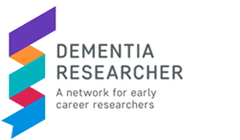
 Print This Post
Print This Post

